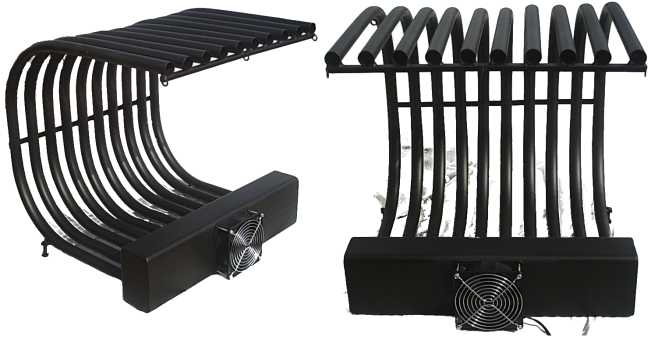|
Shoe Dryer
A shoe dryer or boot dryer is a machine used for drying shoes, and usually functions by blowing air on the inside of the shoes. The airflow causes the shoes to dry faster. The air can be heated for even faster drying, and these are the most common types. Shoes dryers can be especially useful for people who often have wet shoes, such as families with small children or people who often hike outdoor in the nature. Many shoes dryers have a timer which shuts off the dryer after some time. There are also shoe dryers which instead use a heated grate which the shoes are placed on top of, and which do not blow air. History Several patents have been awarded for shoe dryers, with some of the oldest dating back to 1963. Safety Shoe dryers with heating can be a fire hazard if left on for too long, and should therefore be used under supervision. Many fan driven shoe dryers also emit bothersome noise during use. See also * Dehumidifier A dehumidifier is an air conditioning device whic ... [...More Info...] [...Related Items...] OR: [Wikipedia] [Google] [Baidu] |
Airflow
Airflow, or air flow, is the movement of air. The primary cause of airflow is the existence of air. Air behaves in a fluid manner, meaning particles naturally flow from areas of higher pressure to those where the pressure is lower. Atmospheric air pressure is directly related to altitude, temperature, and composition. In engineering, airflow is a measurement of the amount of air per unit of time that flows through a particular device. It can be described as a volumetric flow rate (volume of air per unit time) or a mass flow rate (mass of air per unit time). What relates both forms of description is the air density, which is a function of pressure and temperature through the ideal gas law. The flow of air can be induced through mechanical means (such as by operating an electric or manual fan) or can take place passively, as a function of pressure differentials present in the environment. Types of airflow Like any fluid, air may exhibit both laminar and turbulent flow patterns. ... [...More Info...] [...Related Items...] OR: [Wikipedia] [Google] [Baidu] |
Grate Heater
{{unreferenced, date=October 2010 A tubular grate heater is any grate or heat exchanger for a fireplace designed from metal tubing. Through the tubing is circulated home air that becomes heated by the fire. The air is then vented back into the room and home. It is a heat recovery device that improves the efficiency and ability of a fireplace to get the heat from the fire out and into the home. From simple to ornate, they can contribute significantly to the overall comfort of a room and potentially to a whole house. This in turn will reduce the amount of firewood needed to achieve the same comfort level, potentially reducing heating costs and expenses. Heaters increase the efficiency of a fireplace and hence the amount of heat that makes it from the fireplace out into the home. They work by having naturally convected and forced air funneled into the metal heat exchanger tubing that is then heated by the coals and/or fire. They draw in cold air from the floor and blow heate ... [...More Info...] [...Related Items...] OR: [Wikipedia] [Google] [Baidu] |
Dehumidifier
A dehumidifier is an air conditioning device which reduces and maintains the level of humidity in the air. This is done usually for health or thermal comfort reasons, or to eliminate musty odor and to prevent the growth of mildew by extracting water from the air. It can be used for household, commercial, or industrial applications. Large dehumidifiers are used in commercial buildings such as indoor ice rinks and swimming pools, as well as manufacturing plants or storage warehouses. Typical air conditioning systems combine dehumidification with cooling, by operating cooling coils below the dewpoint and draining away the water that condenses. Overview Dehumidifiers extract water from air that passes through the unit. There are two common types of dehumidifiers: condensate dehumidifiers and desiccant dehumidifiers, and there are also other emerging designs. Condensate dehumidifiers use a refrigeration cycle to collect water known as condensate, which is normally considered to be gre ... [...More Info...] [...Related Items...] OR: [Wikipedia] [Google] [Baidu] |
Drying Cabinet
A drying cabinet is today usually an electrical machine designed to expedite the drying of items - usually clothing - that are unsuitable for a mechanical clothes dryer. Such items may include delicate clothing care labeled as "hang dry", "dry flat" or "do not tumble dry" on their wash instructions, as well as items such as comforters, boots and coats. History In both Europe and America, wealthier and commercial properties sometimes had drying cabinets or drying rooms associated with their laundry rooms. The cabinets were of wood or cast iron, with a series of drying racks on wheels which were pulled in or out of the cabinet horizontally. The cabinet was heated by coal, gas or wood. The Shaker community still uses these cabinets. See also Airing Cupboard. However these cabinets and cupboards were intended for the general drying of laundry, whereas the modern cabinets are usually intended for items of clothing unsuitable for a traditional clothes dryer. Europe Since the 1980s, ... [...More Info...] [...Related Items...] OR: [Wikipedia] [Google] [Baidu] |


